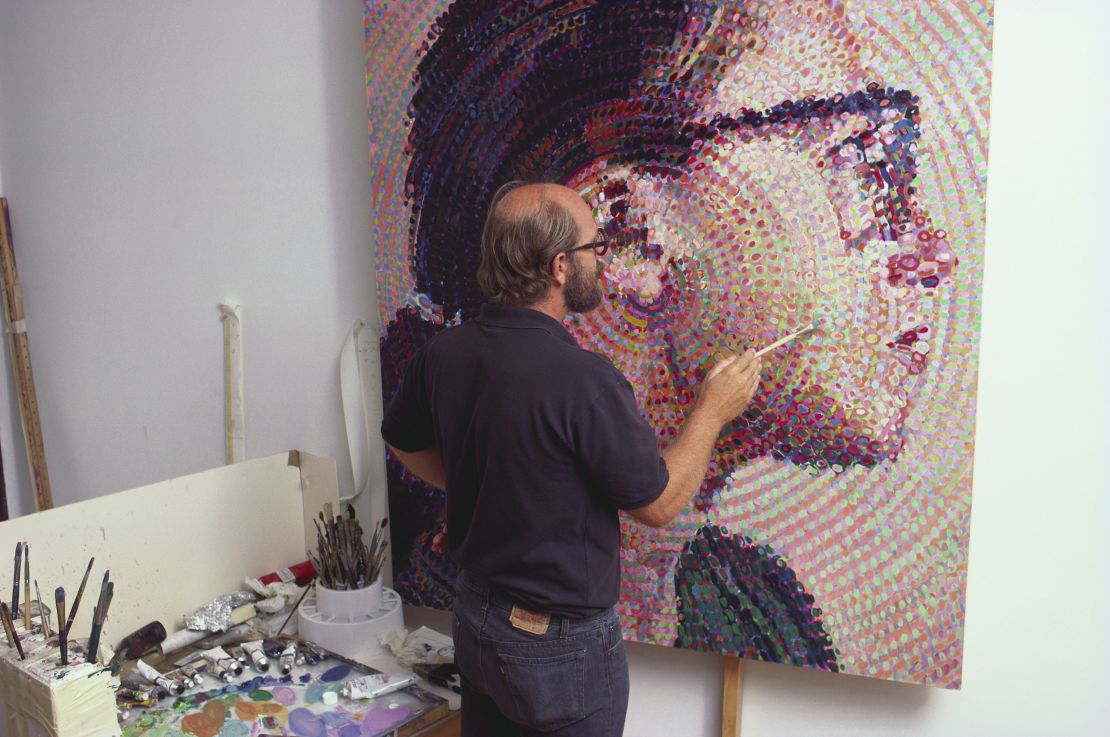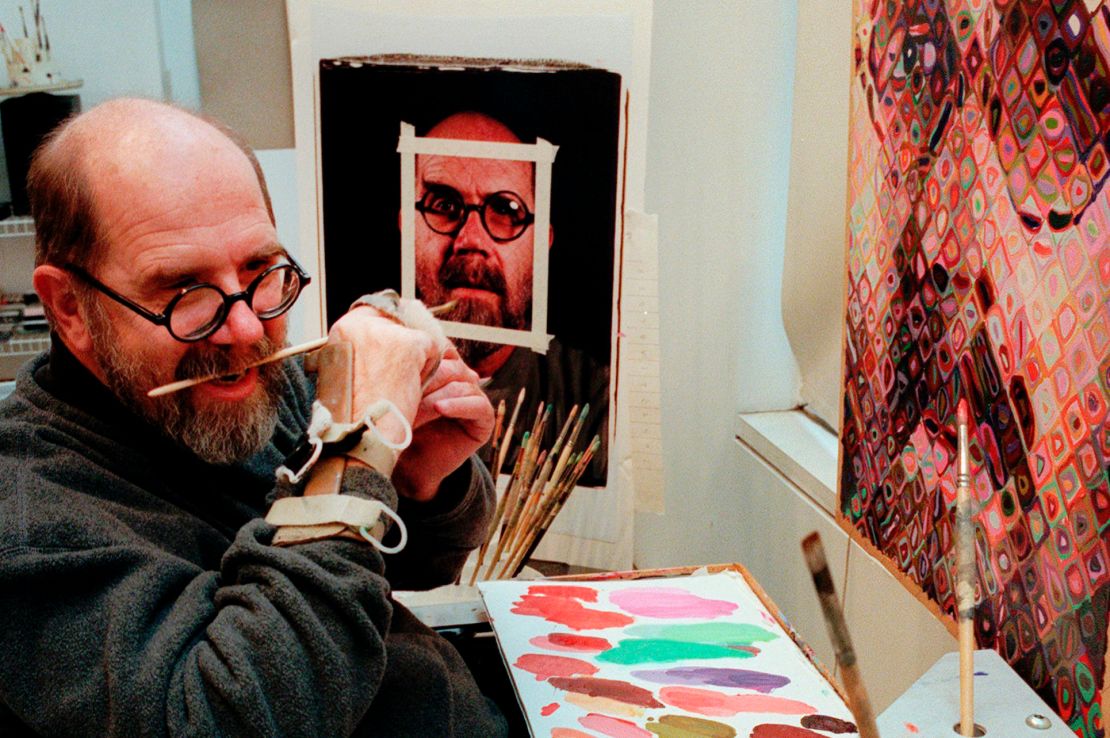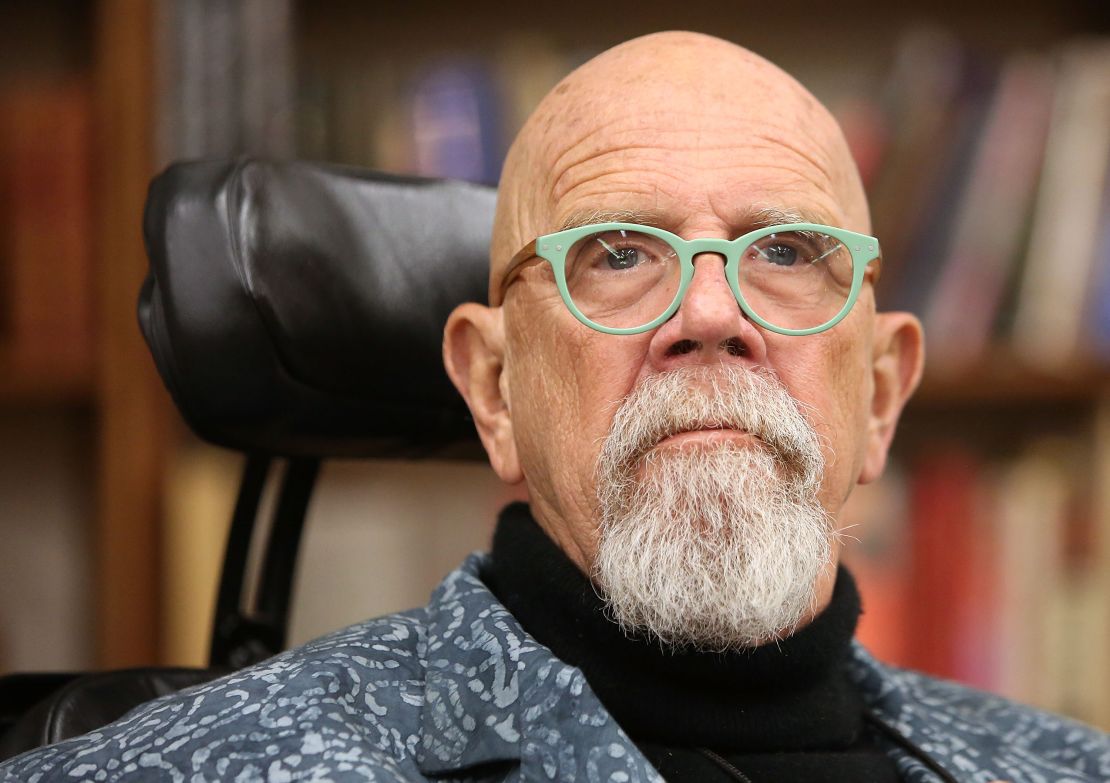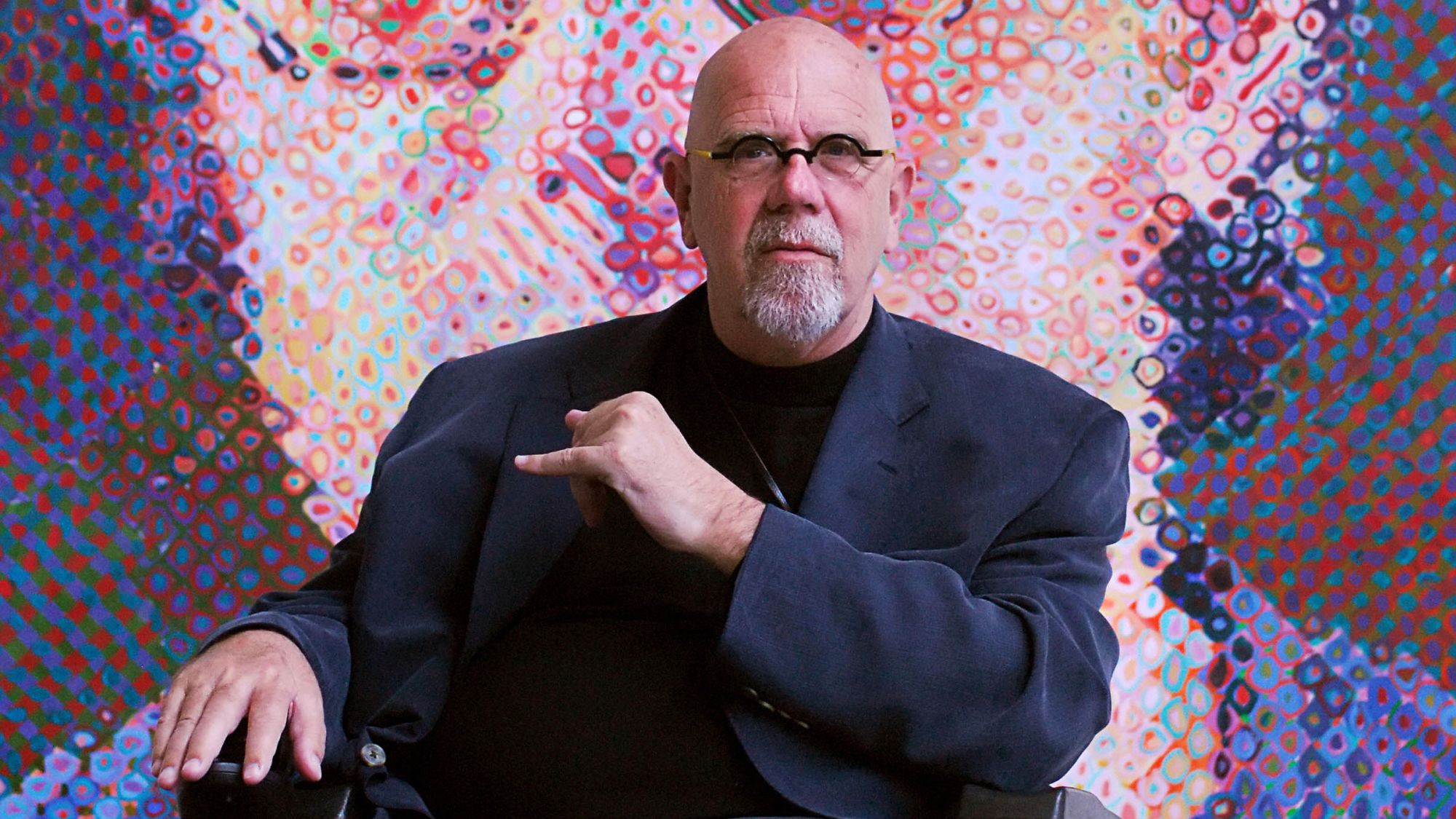American artist Chuck Close, whose large-scale portraits immortalized friends, artists and some of pop culture’s most recognizable faces, died Thursday aged 81.
His death, from congestive heart failure, followed complications from long-term illness according to Pace Gallery, which has represented his work since the 1970s.
“I am saddened by the loss of one of my dearest friends and greatest artists of our time,” said Pace chairman, Arne Glimcher, in a statement published to the gallery’s website. “His contributions are inextricable from the achievements of 20th- and 21st-century art.”
Born in 1940 in Monroe, Washington, Close initially modeled his work on Abstract Expressionists like Jackson Pollock, whose paintings he had encountered as a teen in the 1950s. After studying at the University of Washington, Yale University and the Academy of Fine Arts in Vienna, Austria, he took up a post teaching painting at the University of Massachusetts, Amherst, and soon developed his own signature style.

Despite early influences, Close rejected abstraction in favor of figuration. His first exhibition featured a series of black-and-white paintings based on photographic portraits, a practice that would come to define his later career.
Widening his palette to include color, Close typically created his larger-than-life paintings using photos he had taken himself. His technique centered on a grid system that saw him placing squares over photographs before proportionally replicating the contents of each onto much larger canvases.
The resulting artworks were often photo-realistic – sometimes to the extent that the original images’ imperfections were intentionally reflected in the portraits. But by painting colorful, geometric forms in each tiny “pixel,” his creations frequently took on a distinctive, almost psychedelic form.
Close’s life took a dramatic turn in 1988 when a spinal aneurysm left him almost completely paralyzed aged 48, though he regained enough movement to continue painting using a brush strapped to his wrist and forearm with a brace. His mastery of portraiture was all the more remarkable given his prosopagnosia – or face blindness – a condition that prevented him from recognizing or recalling people’s faces.
“Everything in my work is determined by my learning disabilities and my problems, one of which is face blindness,” he told the World Science Festival in 2015, adding: “I’m sure I was driven to paint portraits by being face blind. That is, I know now that if I can flatten an image out … I can commit it to memory. And I have almost photographic memory for things that are flat.”

While many of his portraits depicted friends, family members and other lesser-known subjects, he often painted fellow artists including Robert Rauschenberg, Roy Lichtenstein and Cindy Sherman. His high-profile celebrity sitters included Paul Simon, Willem Dafoe, Brad Pitt and Kate Moss, among many others. He also painted both Bill and Hilary Clinton, the former having awarded him a prestigious National Medal of Arts in 2000.
Close’s work was exhibited in many of America’s most important cultural institutions, including the Los Angeles County Museum of Art and the Whitney Museum of American Art. In 1998, New York’s Museum of Modern Art honored him with a major retrospective, though his art proved just as suited to the city’s subway system, where a collection of his mosaics are on permanent display at 86th Street station.
The painter’s legacy will, however, be greatly complicated by a series of sexual misconduct allegations that overshadowed his later years. In 2017, the New York Times and HuffPost both published accounts from women who claimed the artist had made lewd and sexual comments as they posed for him at his studio. Close denied wrongdoing, and no charges were ever brought against him, though he acknowledged having a “dirty mouth,” telling the Times: “If I embarrassed anyone or made them feel uncomfortable, I am truly sorry, I didn’t mean to.”

The accusations led the National Gallery of Art in Washington, DC, to cancel a forthcoming exhibition of Close’s work. Having been diagnosed with dementia in 2015, the painter went on to spend his remaining years largely out of the public eye.
Despite this recent reckoning, tributes from around the art world emerged online shortly after his death. In a statement acknowledging Close’s passing – and the accusations made against him – the Smithsonian National Portrait Gallery noted his efforts to “make a person’s face into an overwhelming, impersonal presence.”
Contemporary artist Shepard Fairey, who is best known for his Obama “Hope” poster and for founding streetwear brand Obey, meanwhile described Close as a “major inspiration” in a message posted to his website Thursday.
“Chuck Close made a huge impression on me when I saw his painting of Philip Glass at the Whitney when our family visited NY in 1980,” Fairey wrote. “I stood in front of that large painting completely mesmerized for what seemed like hours.
“I would take a look at some other paintings and then wander back over to the Chuck Close. I was 10 years old and that day marked a turning point.”
